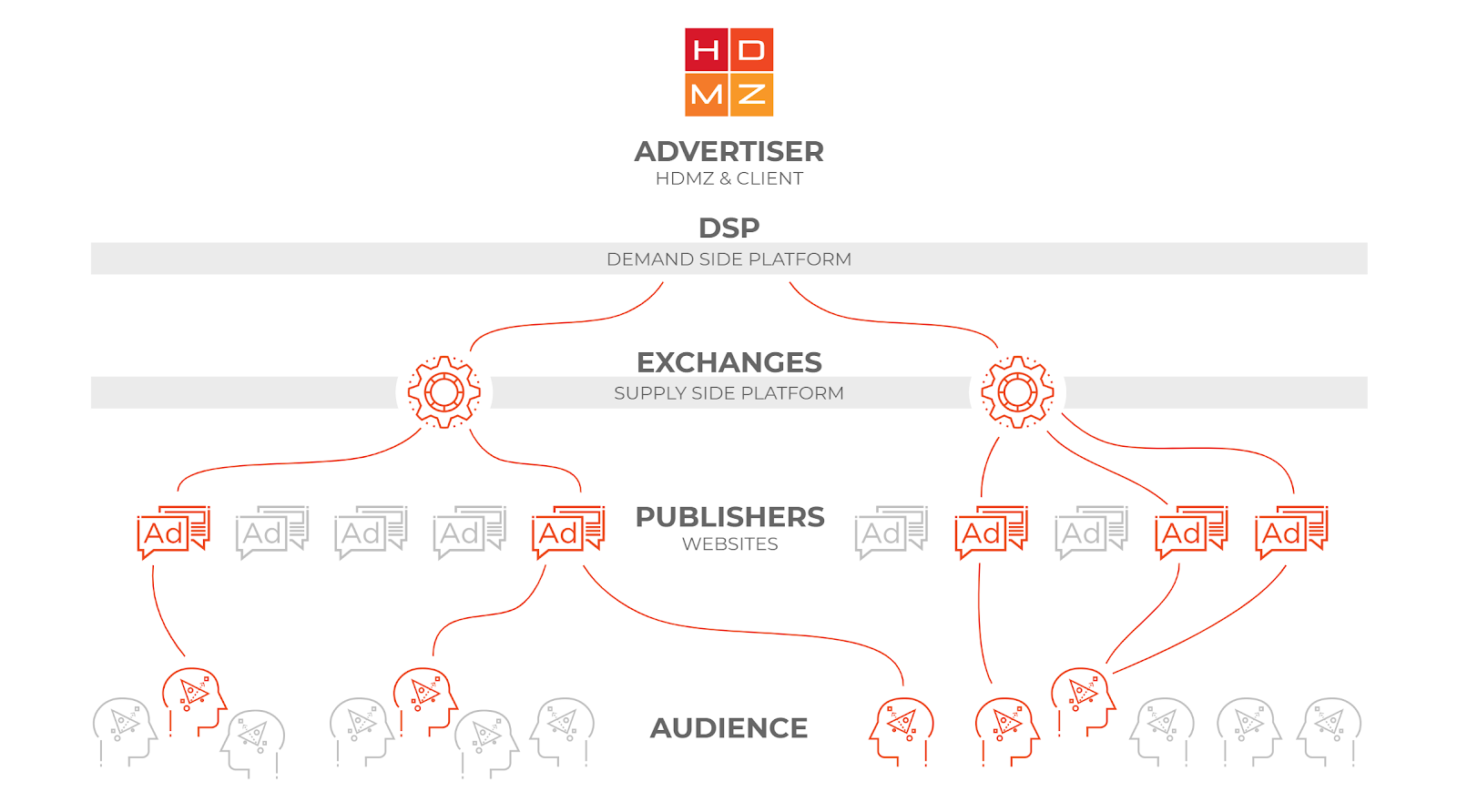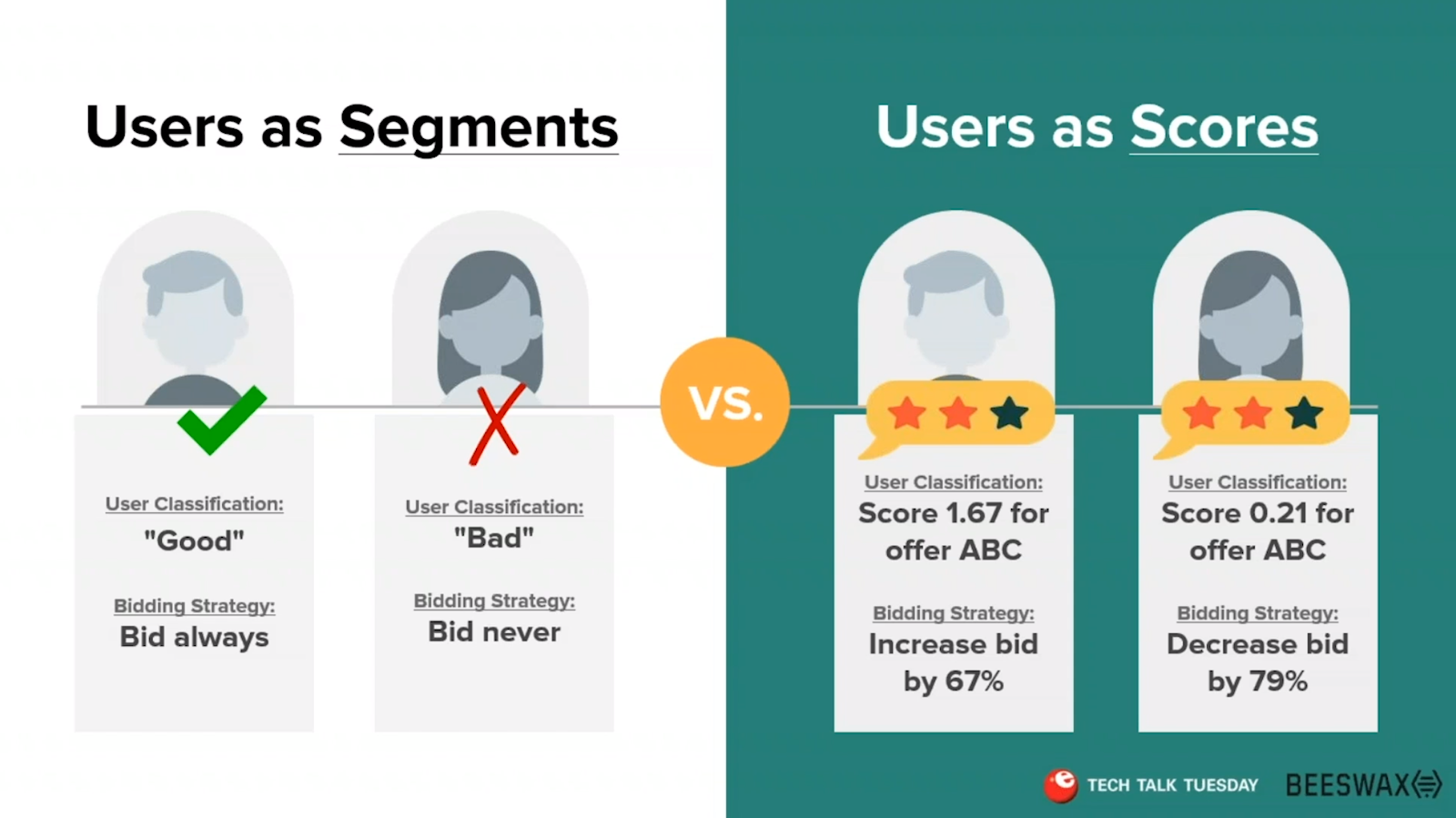The HDMZ Media and Digital Marketing team consistently looks to industry-leading forums like eMarketer for the latest information on digital trends and technologies. For the last couple weeks, eMarketer’s Tech Talk Tuesdays webinar series has focused on programmatic media buying and optimization.

At HDMZ we know that “optimization” is more than a buzzword—it is an integral part of our programmatic media strategy and success. Simply put, programmatic optimization is about getting the best ad placement in front of our target audience at the lowest price, but how does that work?
The eMarketer webinar The Changing Face of Optimization argued that one of the best ways to optimize your programmatic advertising efforts is through user scoring.
What are User Scores?
In the past, programmatic campaigns have been structured around the idea of a “good” and a “bad” user—someone to whom you want to advertise, and someone you don’t. However, the more time we spend getting to know our target audience, the more marketers realize it isn’t so black and white. eMarketer advises utilizing a dynamic scoring method based on a user’s likelihood of responding to a specific offer.
Example - You sell products to combat dehydration and just launched a more cost-effective oral alternative to IV. You want to target your promotions to healthcare providers in rural areas that could most benefit from this solution.
- Joe - runs a clinic in rural Georgia and buys products from your online store frequently. You know that he is incredibly likely to purchase this new rehydration solution and are willing to pay $$$.
- Mary - on the other hand, works at a small town hospital in Wisconsin and visited your site to look at rehydration solutions a few months ago, but she never bought anything... Now she isn’t the most desirable user (we don’t know if she has buying power and she hasn’t visited the site in quite some time), but she has shown interest in the past and is located in your target geographical market. You are willing to bid on an ad for her, but you don’t want to pay more than $.
Scoring allows you to differentiation between Joe and Mary without having to completely discount Mary as a potential client.

To set up this kind of scoring we look to first party data (like a user’s interaction with our site). We can also draw on factors like location, age, and technology platform used—advertisers don’t often have this kind of data on hand, but demand-side platforms used in programmatic advertising do.
Challenges - Demand side platforms (DSPs) can be a giant black box that numerous organizations move their programmatic activities through. These prime examples of machine learning use data from all the brands that place programmatic advertisements through them to better predict how a user will respond to certain kinds of content. This can mean that your competitors benefit from your campaign performance data without ever seeing the numbers or trends themselves (and vice versa). Due to the hidden nature of this big data, according to Forbes Insights, 62% of organizations have admitted to not fully leveraging their first party data.
Whether out of wariness for big data or simply lacking the knowledge to use it properly, companies are missing out on the opportunity to provide unique customer experiences and targeted campaigns. Forbes Insights points to Shiseido, the world’s fifth-largest cosmetic company, as a successful example of optimization through big data. Shiseido decided to consolidate all of their first party data into a single customer data platform. Using this approach they were able to deliver more personalized offers to their loyalty program customers and increase in-store revenue per loyalty member by 20%.
To learn more about how HDMZ can help your company overcome the challenges of optimization and make the most of your first party data, drop us a line.


